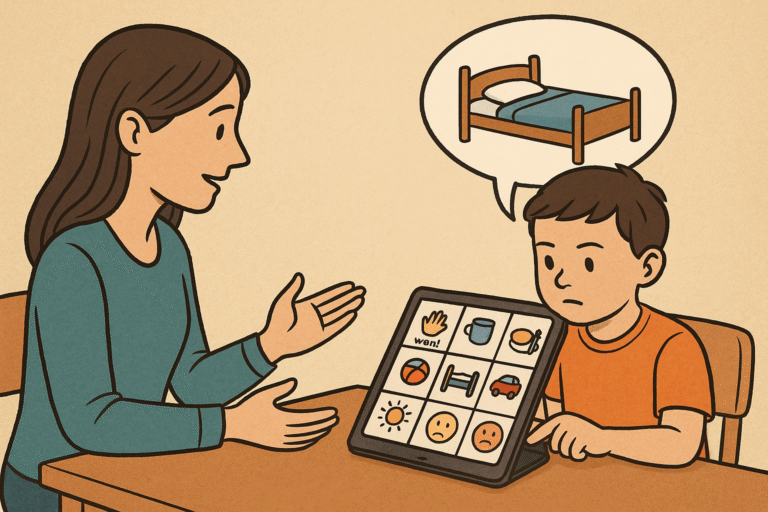How to Support Autistic Teens During Transitions in Life
Transitions are a natural part of life, but they can be particularly challenging for autistic teenagers.
Moving from one stage to another, whether it’s starting high school, transitioning to adulthood, or entering the workforce, can bring about uncertainties and stress.

For autistic teens, these transitions often involve navigating changes in routines, environments, and expectations, which may feel overwhelming.
However, with the right strategies and support systems in place, these transitions can become smoother and more manageable.
This article explores how parents, educators, and communities can provide effective support to autistic teens during these critical life stages.
Understanding the Challenges of Transitions for Autistic Teens
Transitions can be daunting for autistic teens because they often thrive on predictability and structure. Changes disrupt their routines and may require them to adjust to new social, sensory, and environmental demands. Common challenges during transitions include:
- Sensory Overload: New environments often come with unfamiliar sensory stimuli, such as different lighting, noise levels, and textures, which can be overwhelming.
- Social Adjustments: Meeting new peers, teachers, or coworkers requires adapting to social dynamics, which can be challenging for teens who struggle with communication or interpreting social cues.
- Executive Functioning Demands: Transitions often involve planning, organizing, and time management—skills that can be difficult for many autistic individuals.
- Emotional Regulation: Feelings of anxiety or uncertainty about the unknown can lead to emotional distress.
- Resistance to Change: Autistic teens may feel more comfortable with familiar routines and resist changes that require adaptation.
Recognizing these challenges is the first step in providing meaningful support.
Building a Foundation for Successful Transitions
Preparation and proactive planning are essential to help autistic teens navigate transitions effectively.
Here are foundational steps to set them up for success:
1. Create a Predictable Routine
Routines provide a sense of security for autistic teens. When planning transitions, maintain as much consistency as possible in their daily schedules. Gradually introduce changes to the routine in small, manageable steps. For example, if your teen is transitioning to high school, you might:
- Visit the new school several times before the first day.
- Practice the new schedule at home to build familiarity.
- Use visual schedules or calendars to map out the day.
2. Use Social Stories and Visual Supports
Social stories and visual supports are powerful tools for preparing autistic teens for new experiences. Social stories are short narratives that describe what to expect in specific situations. They can help teens understand and rehearse what will happen, reducing anxiety.
For instance, if your teen is starting a new job, a social story might include details about:
- Arriving at work on time.
- Greeting coworkers.
- Completing specific tasks.
Visual supports, such as charts, checklists, and pictograms, can provide step-by-step guidance for navigating new environments or responsibilities.
3. Develop Coping and Self-Regulation Strategies
Teach your teen coping mechanisms to manage stress and sensory challenges. These might include:
- Deep breathing exercises.
- Taking short breaks in quiet spaces.
- Using fidget tools or noise-canceling headphones.
Encourage them to identify and communicate their needs when they feel overwhelmed.
4. Foster Self-Advocacy Skills
Empowering autistic teens to advocate for themselves is a critical step in their development. Teach them how to:
- Recognize and articulate their strengths, challenges, and needs.
- Ask for accommodations or assistance.
- Set boundaries when necessary.
Role-playing scenarios and practicing scripts can help them feel more confident in expressing themselves.
Supporting Transitions in Education
Educational transitions, such as moving from middle school to high school or from high school to college, often come with increased academic and social demands.

Here’s how to support your teen during these changes:
1. Collaborate with Educators and Support Staff
Work closely with teachers, counselors, and special education staff to create an Individualized Education Plan (IEP) or 504 Plan that addresses your teen’s specific needs. This plan should include:
- Accommodations for sensory sensitivities (e.g., extended test times, quiet spaces).
- Support for executive functioning (e.g., using planners or organizers).
- Social skills training or access to peer support groups.
Regular communication with school staff ensures that everyone is aligned in supporting your teen’s success.
2. Prepare for High School Challenges
High school often involves larger class sizes, new social dynamics, and more complex coursework.
Help your teen adjust by:
- Visiting the school beforehand to familiarize them with the layout.
- Introducing them to key staff members, such as their homeroom teacher or guidance counselor.
- Encouraging participation in clubs or activities that align with their interests.
3. Plan for Postsecondary Education
If your teen is considering college, start the planning process early. Research colleges with strong disability support services and schedule campus visits to assess their accessibility.
Encourage your teen to:
- Learn about available accommodations, such as note-taking services or extended test times.
- Practice independent living skills, such as managing a budget, cooking, and doing laundry.
Navigating the Transition to Adulthood
Adulthood brings new responsibilities and opportunities, from finding employment to living independently.
Here are key areas to focus on:
1. Employment Readiness
Help your teen prepare for the workforce by:
- Exploring their strengths and interests to identify suitable career paths.
- Teaching workplace etiquette, such as punctuality and effective communication.
- Connecting them with job training programs or internships designed for autistic individuals.
Organizations like Autism Speaks and local vocational rehabilitation services often offer resources for autistic job seekers.
2. Independent Living Skills
Independent living involves a range of skills, from managing finances to cooking and self-care. Break these skills into manageable steps and practice them regularly. For example:
- Teach budgeting by having your teen track their expenses and plan for purchases.
- Practice grocery shopping and meal preparation together.
- Encourage responsibility for personal hygiene and household chores.
3. Building a Support Network
Transitioning to adulthood doesn’t mean your teen has to navigate life alone. Help them build a strong support network, which may include:
- Family members and close friends.
- Mentors or coaches.
- Support groups or community organizations for autistic adults.
Promoting Social and Emotional Growth
Social and emotional development is a lifelong process. Supporting autistic teens in building these skills can enhance their confidence and well-being during transitions.

1. Encourage Meaningful Relationships
Help your teen develop and maintain friendships by:
- Facilitating opportunities for social interaction, such as joining clubs or community groups.
- Teaching conversation skills and strategies for resolving conflicts.
- Encouraging shared activities with peers who share similar interests.
2. Support Emotional Well-Being
Monitor your teen’s mental health and provide support when needed. Consider:
- Seeking therapy or counseling to address anxiety, depression, or other challenges.
- Encouraging open communication about their feelings and concerns.
- Providing reassurance and celebrating their achievements, no matter how small.
Leveraging Technology and Resources
Technology can play a vital role in supporting autistic teens during transitions. Consider using:
- Apps for Organization: Tools like Google Calendar or Todoist can help with time management.
- Social Skills Training Apps: Programs like “Peppy Pals” or “Emotionary” can help teens develop social and emotional skills.
- Online Support Communities: Platforms like Wrong Planet offer forums for autistic individuals to share experiences and advice.
Conclusion
Supporting autistic teens during transitions in life requires understanding, preparation, and a commitment to their growth and well-being.
By building a foundation of predictability, fostering self-advocacy, and providing practical tools and resources, you can help your teen navigate these changes with confidence.
Remember, every autistic individual is unique, so tailor your approach to their specific needs and preferences. With patience and support, these transitions can become opportunities for growth, independence, and self-discovery.





